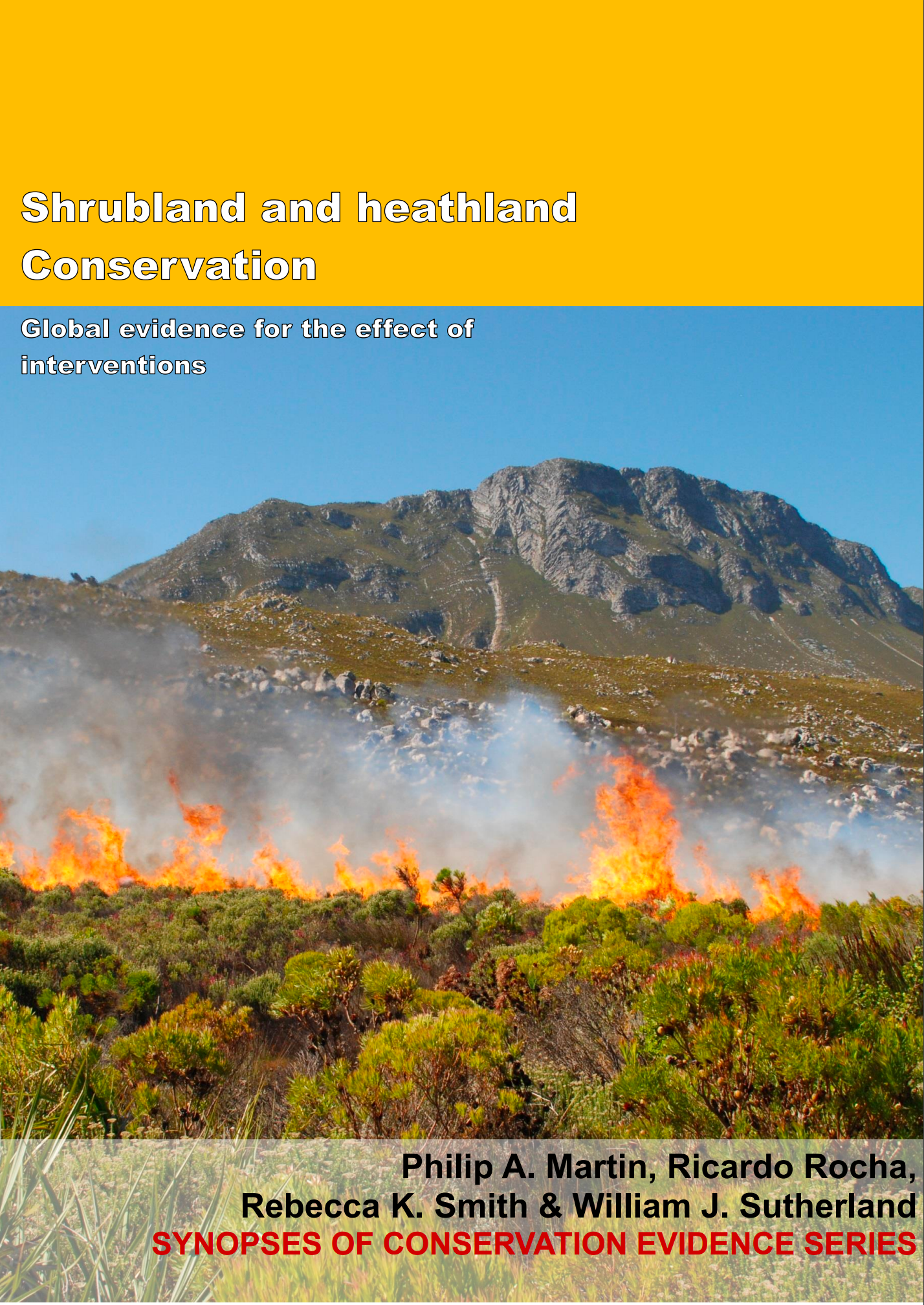Plant turf
-
Overall effectiveness category Unknown effectiveness (limited evidence)
-
Number of studies: 3
View assessment score
Hide assessment score
How is the evidence assessed?
-
Effectiveness
62% -
Certainty
30% -
Harms
0%
Study locations
Supporting evidence from individual studies
A randomized, controlled study in 1988–1993 in a former heathland in Dorset, UK (Pywell et al. 1995) found that planting turf from intact heathland sites increased the number of seedlings for four of seven heathland species after one year, and increased the abundance of five of six heathland species after three years. For four of seven heathland species the number of seedlings in plots where turves were planted was (8–538 seedlings/m2) was higher than in plots turves were not planted (0 seedlings/m2). The abundance of five of six heathland plant species was higher in plots where turves were planted (3–90 shoots/m2) compared to plots no turves were planted (0–4 shoots/m2). In 1989 turves measuring 1.2 m x 2.3 m x 0.15 m were excavated from a nearby mature heathland site and transported to the restoration site. In three 500 m2 plots soil was stripped to a depth of 15 cm and turves planted and in three plots no turves were planted. In 1990–1991 the number of seedlings was recorded in seven 0.5 m x 1 m quadrats which were placed in each plot. In 1993 the number of plant shoots was recorded in three 1 m2 quadrats which were randomly placed in each plot.
Study and other actions testedA randomized, controlled study in 1988–2005 in a former heathland in Dorset, UK (Pywell et al. 2011) found that planting turf from intact heathland sites increased the cover of heathland species and forbs, and reduced grass cover. After 17 years, cover of heathland species and forbs was higher in plots where turf was planted (heathland: 100%; forbs: 92%) than in plots where it was not (heathland: 16%; forbs: 27%). Grass cover was lower in plots where turf was added (10%) than in plots where it was not (59%). In 1989 turves were excavated from a nearby mature heathland site. Topsoil of three 500 m2 plots was removed and turves planted, while in three plots no turves were planted. In 2005 the cover of plants was recorded in four 1 m2 quadrats which were randomly placed in each plot.
Study and other actions testedA randomized, replicated, controlled study from 2007 to 2009 at two sites in southern Iceland (Aradottir et al. 2012) found that transplanting turf from heathland sites to unvegetated sites had a mixed effect on number of plant species, and the cover of shrubs and grass. After two years, when transplanted turf sizes were larger than 20 cm x 20 cm, the number of plant species was higher in areas with transplanted turf (7 species/plot) than in untreated areas (2 species/plot), but not when turf sizes were smaller (3 species/plot). The cover of shrubs increased when turf was larger than 30 cm x 30 cm (to 1% cover) relative to untreated controls (0%), but not when turf sizes were smaller (0%). Grass cover increased when turf was larger than 30 cm x 30 cm (to 2%) compared to untreated controls (0–1%), but not when turf were smaller than 20 cm x 20 cm. Two unvegetated sites were established in 2007. At one site all vegetation had been removed, while the other site was a roadside verge covered with gravel. At each site turf from a nearby dwarf shrub heathland was planted in 40 randomly located 2 m2 plots using different sizes of turf (8 plots for each turf size), with eight further plots left untreated. Vegetation cover of all plant species was recorded yearly between June and August in each 2 m2 plot.
Study and other actions tested
Where has this evidence come from?
List of journals searched by synopsis
All the journals searched for all synopses
This Action forms part of the Action Synopsis:
Shrubland and Heathland Conservation
Shrubland and Heathland Conservation - Published 2017
Shrubland and Heathland synopsis





)_2023.JPG)














